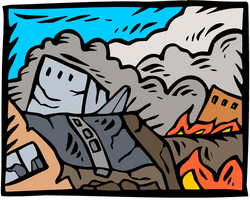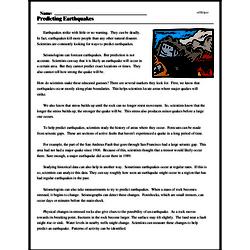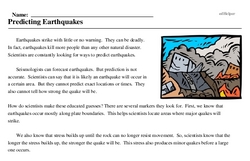Predicting Earthquakes
Earthquakes strike with little or no warning. They can be deadly. In fact, earthquakes kill more people than any other natural disaster. Scientists are constantly looking for ways to predict earthquakes.
Seismologists can forecast earthquakes. But prediction is not accurate. Scientists can say that it is likely an earthquake will occur in a certain area. But they cannot predict exact locations or times. They also cannot tell how strong the quake will be.
How do scientists make these educated guesses? There are several markers they look for. First, we know that earthquakes occur mostly along plate boundaries. This helps scientists locate areas where major quakes will strike.




